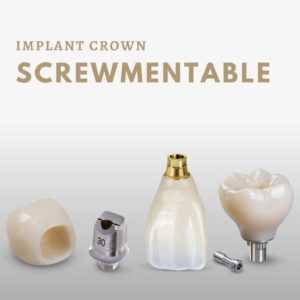You know the feeling: 4pm on a Friday afternoon, and an emergency patient sits in your chair wanting you to figure out their problem, not next week, but right this second. Many times, the emergency exam (formally known as the Limited Oral Evaluation) is a complicated process with patient’s reported symptoms being confusing and misleading, but it is up to you as the dentist to come up with the correct diagnosis to be able to address their chief complaint. With symptoms being so objective and personal to each patient, there are some general steps that you can take in order to simplify your emergency exams and leave with peace of mind knowing your patients were well-cared-for.
First things first: the history of the chief complaint.
Ask the patient questions like: “Are you in pain?”, “when did the pain start?”, “Was there something that happened right before the pain started?”, “Is the pain spontaneous or only with cold/hot drinks?”, “Is the pain keeping you up at night?”, “Have you taken any medications, and have they helped with the pain?”. These questions can help you to start thinking about differential diagnoses. For example, a patient who is reports pain on biting and cold sensitivity but no spontaneous pain may just have high occlusion, reversible pulpitis or even a small crack. Sharp pain on release from biting may indicate a cracked tooth. Pain on flossing in an area of a recently placed restoration may be a tight contact or may be a bond failure. When you start getting reports of spontaneous pain, sensitivity to heat, and throbbing sensations, then you start thinking more pulpal involvement with possibility for a root canal. The patient may also not always have pain, and their emergency could be that they have a small chip on the incisal edge of their front tooth with a wedding to attend tomorrow. With a proper history, you can also usually narrow down the area of focus to allow you to more effectively diagnose a specific cause for the discomfort.
Second step: the clinical exam.
After getting an idea of what some possible differential diagnoses are, you can now plan on what clinical tests that you might need to do to get a more definitive diagnosis. Take a look at the tooth and the surrounding teeth. Have the patient point to the tooth or area that they are complaining about. Look for the presence of sinus tracts which are signs of chronic infection. If you’re suspicious that a tooth needs a root canal, an Endo Ice cold test can give you an 86% accurate result of the pulp’s vitality. The percussion test can tell you whether or not there is an infection at the root of the tooth, or sometimes can help with finding a crack (along with another tool called a tooth sleuth). Probing depths can reveal the presence of a crack if there are isolated deep probing depths or some active periodontal disease if there are more generalized deep probing depths. The idea with these various tests is to gather enough information to combine with reported symptoms in order to come to a proper diagnosis.
Next step: the radiograph.
After thinking through some differential diagnoses based on the history recorded and clinical exam, you can now decide what kind of radiographs that you would like to take. Radiographs are not always necessary in every emergency exam, but in most cases involving pain or discomfort, they are a great step in helping you to properly diagnose. In most cases, a periapical picture is a great first picture to get. It can show you any active infection happening at the root of the tooth or show you any possible caries, large fractures, or other possible causes of pain. You may also be able to detect classic signs of certain types of diagnoses such as J-shaped lesions present in cracked teeth. If you are dealing with a deeply carious tooth or fractured tooth, a bitewing is also a great image to have because it shows you the bone level in relation to the remaining tooth structure. This image can help you to decide when a tooth’s restorability prognosis is good, questionable or even hopeless/non-restorable.
Final step: treatment options and informed consent.
Whether your treatment option is a painless and small Class IV filling or a complicated surgical extraction, informed consent is the key. After making your diagnosis, come up with a list of acceptable (and realistic) treatment options, and present all of them to your patient. It is okay to give your patient your opinion on a treatment option, but don’t forget that the decision ultimately comes down to them—patient autonomy is important. Likewise, it is important to remember that no treatment is also an option, but it is up to you to inform your patient about the risks and benefits of doing nothing. Another great tip from one of my clinical faculty back in dental school when dealing with patients with severe pain is to anesthetize them (with consent) after getting all of your diagnostics but before discussing final treatment options. This allows your patient to truly have informed consent and make rational decisions based on risks and benefits instead of making emotional decisions based on current pain level.
While emergency diagnosis and treatment can be much more complicated than expected, remembering these few steps can help to simplify the process and leave you with a satisfied patient.

General Dentist. Author at The Tooth Bank and create content for our social media with a focus on providing information for new dentists..




